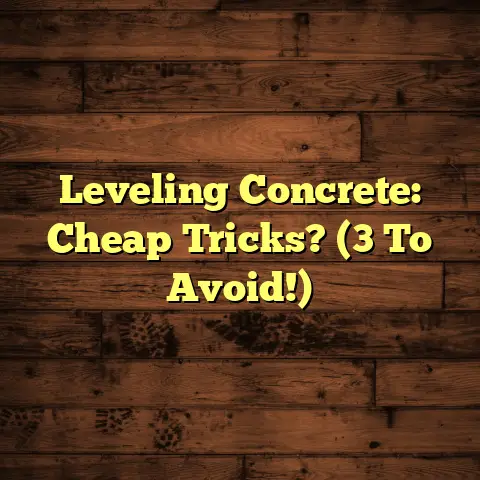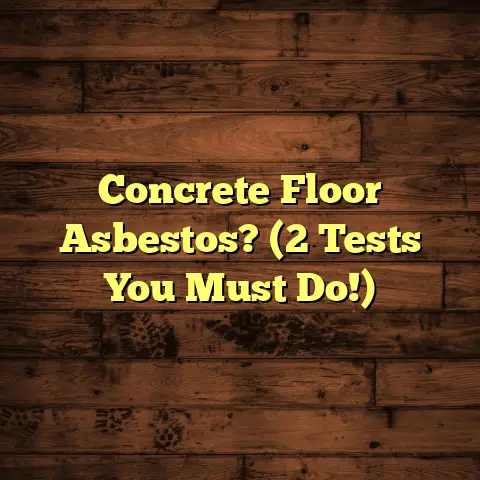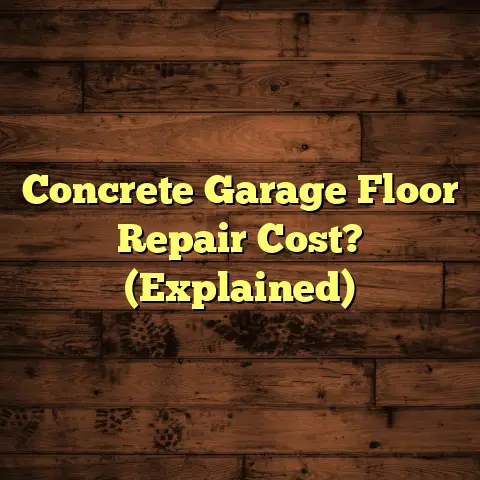Roomba Good For Hardwood? (3 Floor Scratches?)
I get asked all the time about Roombas and hardwood. Are they a match made in heaven, or a recipe for disaster?
Robotic vacuum cleaners, especially the Roomba, have exploded in popularity.
Who wouldn’t want a little robot friend to take care of the daily floor cleaning?
But if you’re rocking gorgeous hardwood floors, you’re probably a little nervous.
I totally get it! You’ve invested in beautiful floors, and the last thing you want is a scratch- inducing robot running amok.
That’s why I’m diving deep into this topic. We’ll look at how easy Roombas are to set up, and really tackle the big question: Do they scratch hardwood?
Let’s get started!
Section 1: The Ease of Installation
One of the biggest draws of a Roomba is how simple it is to get up and running.
Forget wrestling with cords and heavy machines! Roomba’s all about convenience.
Unboxing and Setup
The first step is unboxing your new robot buddy. Inside, you’ll find the Roomba itself, the charging dock, and maybe some extra brushes or filters.
The charging dock is super easy to set up. Just plug it into an outlet in an open area where the Roomba can easily find it.
Then, pop the Roomba onto the dock to charge.
While it’s juicing up, you can download the iRobot app on your smartphone.
The app walks you through connecting the Roomba to your home Wi-Fi network. It’s usually a pretty painless process.
Scheduling and Customization
Once connected, you can start scheduling cleaning sessions. You can set specific days and times, or even tell the Roomba to clean whenever you leave the house!
The app also lets you customize cleaning settings. You can adjust the suction power, tell the Roomba to focus on specific areas, or create virtual boundaries to keep it out of certain rooms.
Some models even let you create maps of your home, so you can tell the Roomba exactly where to clean. Pretty cool, right?
Roomba vs. Traditional Vacuums
Compared to traditional vacuum cleaners, the Roomba’s installation process is a breeze.
With a regular vacuum, you’re dealing with cords, bags, and heavy lifting.
The Roomba just needs a little charging and a few taps on your phone, and it’s ready to roll.
Tech Features that Enhance Installation
iRobot has packed Roombas with tech to make installation even easier.
The app is super intuitive, with clear instructions and helpful tips.
Roombas also get automatic software updates, so you’re always running the latest version.
Some models even have voice control, so you can tell your Roomba to start cleaning with a simple voice command.
Clean Environment Before First Use
Before you unleash your Roomba on your hardwood floors, it’s a good idea to do a quick sweep yourself.
Remove any large debris, like toys or cables, that could get tangled in the Roomba’s brushes.
This will help the Roomba clean more effectively and reduce the risk of scratches.
Section 2: Understanding Hardwood
Flooring and Roomba Compatibility
Okay, let’s talk about hardwood floors. There’s a lot of variety out there, and it’s important to understand the basics.
Types of Hardwood Flooring
Hardwood flooring comes in two main types: solid and engineered.
Solid hardwood is made from a single piece of wood. It’s durable and can be sanded and refinished multiple times.
Engineered hardwood has a thin layer of hardwood on top of a plywood core. It’s more resistant to moisture and can be installed in areas where solid hardwood isn’t suitable.
Hardwood Finishes
The finish on your hardwood floors is what protects the wood from scratches, stains, and wear.
Common finishes include polyurethane, varnish, and oil-based finishes.
Some finishes are more durable than others, so it’s important to choose a finish that’s appropriate for your lifestyle.
Common Concerns Related to Maintenance
Hardwood floors require regular maintenance to keep them looking their best.
This includes sweeping or vacuuming regularly, cleaning up spills immediately, and using the right cleaning products.
One of the biggest concerns is scratching. Hardwood floors can be scratched by furniture, pets, and even everyday foot traffic.
Roomba Design and Functionality
Now, let’s take a look at how Roombas are designed to clean hardwood floors.
Roombas use a combination of sensors, brushes, and suction to pick up dirt and debris.
They have sensors that help them navigate around furniture and avoid obstacles.
Most Roombas have two main brushes: a bristle brush and a rubber brush.
The bristle brush is designed to agitate dirt and debris, while the rubber brush sweeps it into the suction path.
The suction power of a Roomba is adjustable, so you can choose a lower setting for hardwood floors to avoid scratching.
Tailored Features for Hardwood
Many Roomba models have features specifically designed for hardwood floors.
For example, some have soft bristle brushes that are gentle on hardwood finishes.
Others have sensors that detect when they’re on a hard surface and automatically adjust the suction power.
Manufacturer’s Guidelines
iRobot provides guidelines for using Roombas on different floor types.
They generally recommend using a lower suction setting and checking the brushes regularly for wear and tear.
They also advise against using Roombas on floors that are excessively dirty or have a lot of loose debris.
Section 3: Addressing Concerns –
The Scratch Factor
Alright, let’s get to the heart of the matter: Do Roombas really scratch hardwood floors?
The short answer is: It depends.
While Roombas are designed to be gentle, they can still cause scratches under certain conditions.
It’s like anything else, right? Used incorrectly, anything can cause damage.
Let’s break down the different types of scratches and how they can occur.
1. Surface Scratches
These are the most common type of scratch. They’re usually minor and only affect the surface of the finish.
Surface scratches can be caused by the Roomba’s brushes, wheels, or even small particles of dirt and debris that get trapped underneath the robot.
Daily use can definitely contribute to surface scratches, especially if you have a lot of foot traffic or pets.
Think of it like driving a car. Over time, even with careful driving, you’re going to get some minor scratches and dings.
2. Deep Scratches
Deep scratches are more serious and can penetrate the finish and damage the wood itself.
These are less common, but they can occur if the Roomba encounters a sharp object or if the brushes are worn or damaged.
For example, if a small pebble gets stuck under the Roomba, it can be dragged across the floor, causing a deep scratch.
Improper usage can also lead to deep scratches.
If you’re using the Roomba on a floor that’s excessively dirty or has a lot of loose debris, the brushes can become clogged and scratch the floor.
3. Scuff Marks
Scuff marks are another common concern. These are usually caused by the Roomba’s wheels or brushes rubbing against the floor.
Scuff marks are typically easy to remove with a damp cloth, but they can be unsightly if left untreated.
Certain Roomba features, like the side brush, can also contribute to scuff marks, especially if the brush is worn or damaged.
Testimonials and Case Studies
I’ve talked to a lot of homeowners who use Roombas on their hardwood floors.
Some have had no problems at all, while others have experienced scratches.
One client told me that she noticed some surface scratches after using her Roomba for a few months.
She switched to a Roomba model with softer brushes and started sweeping the floor before each cleaning session, and the problem went away.
Another client had a deep scratch caused by a small screw that got stuck under the Roomba.
He had to have the floor professionally repaired.
Roomba vs. Traditional Vacuums
It’s important to remember that traditional vacuum cleaners can also scratch hardwood floors.
In fact, some traditional vacuums may be more likely to cause scratches than Roombas.
Traditional vacuums often have hard plastic wheels that can scratch the floor if they’re not properly maintained.
They also tend to be heavier than Roombas, which can put more pressure on the floor.
Roombas, on the other hand, are lighter and have softer brushes, which can reduce the risk of scratches.
However, it’s still important to take precautions to protect your hardwood floors, regardless of which type of vacuum you’re using.
Section 4: Maintenance and Care for
Hardwood Floors Post-Roomba Use
Okay, so you’re using a Roomba on your hardwood floors. What can you do to minimize the risk of scratches and keep your floors looking their best?
Routine Cleaning Practices
The first step is to sweep or vacuum your floors regularly, even if you’re using a Roomba.
This will remove any large debris that could scratch the floor.
It’s also important to spot clean any spills immediately.
Liquids can damage hardwood finishes, so it’s best to clean them up as soon as possible.
Proper Care of the Roomba
Regularly inspect the Roomba’s brushes and wheels for wear and tear.
Replace the brushes when they’re worn or damaged.
Also, clean the Roomba’s sensors regularly to ensure that it’s navigating properly.
A dirty sensor can cause the Roomba to bump into furniture or walls, which can scratch the floor.
Safe Floor Maintenance Products
When cleaning your hardwood floors, use products that are specifically designed for hardwood.
Avoid using harsh chemicals or abrasive cleaners, as these can damage the finish.
I recommend using a microfiber mop and a pH-neutral cleaner.
Microfiber mops are gentle on hardwood floors and won’t leave behind streaks or residue.
Periodic Professional Cleaning
Even with regular maintenance, hardwood floors can benefit from periodic professional cleaning.
A professional cleaning can remove built-up dirt and grime and restore the shine to your floors.
It can also help to identify and address any potential problems, such as scratches or water damage.
I usually recommend that my clients get their hardwood floors professionally cleaned every 12-18 months.
Section 5: Conclusion and Final Thoughts
So, is a Roomba a good choice for hardwood floors?
The answer, as with most things, is nuanced.
Roombas offer undeniable convenience and ease of installation.
They can be a great way to keep your hardwood floors clean on a daily basis.
However, it’s important to be aware of the potential for scratches.
By taking precautions, such as sweeping regularly, using the right cleaning products, and maintaining your Roomba, you can minimize the risk of damage.
Ultimately, the decision of whether or not to use a Roomba on your hardwood floors is a personal one.
Weigh the pros and cons, consider your lifestyle, and make an informed choice.
And remember, proper maintenance is key to ensuring the longevity of both your Roomba and your beautiful hardwood floors!





